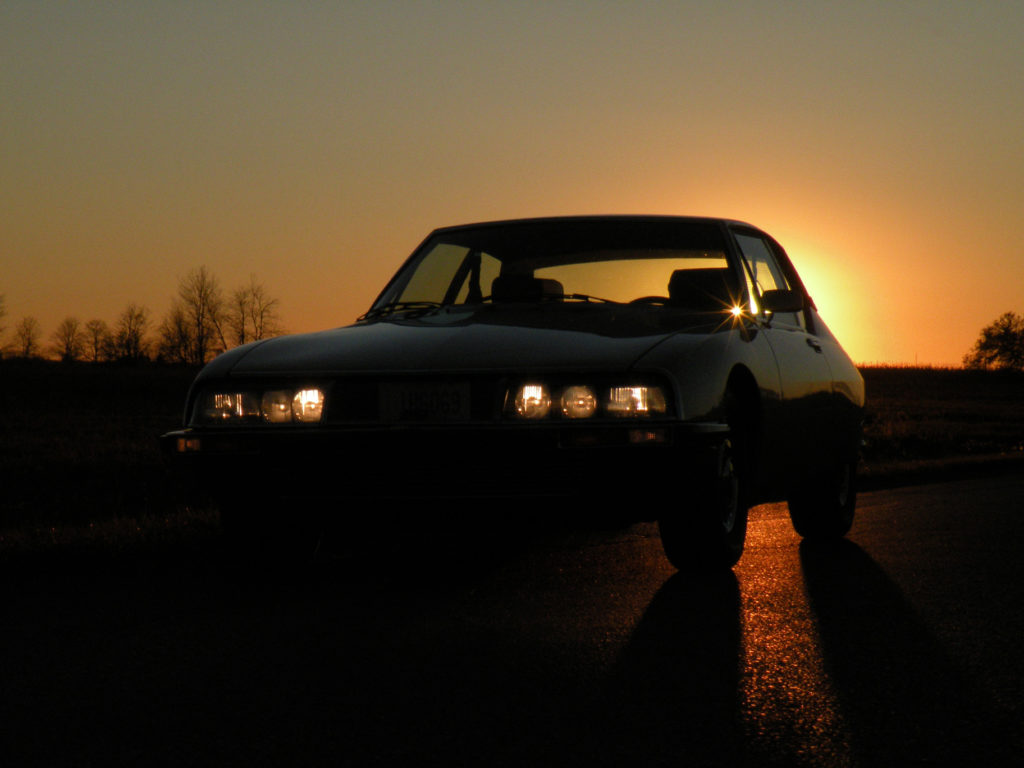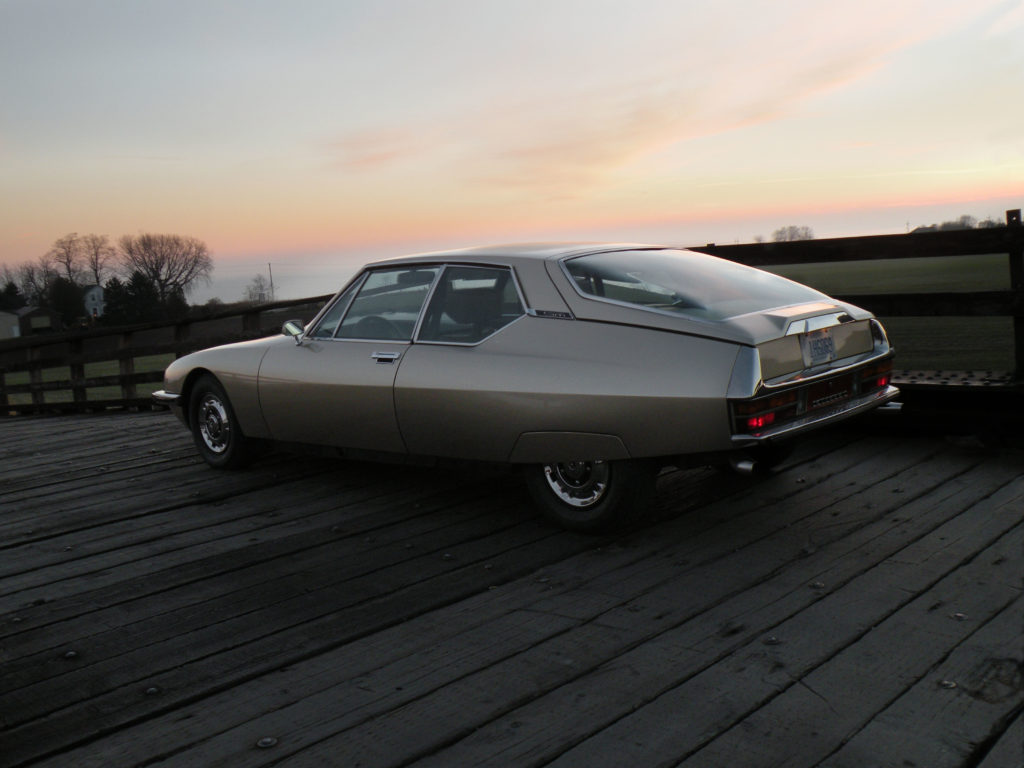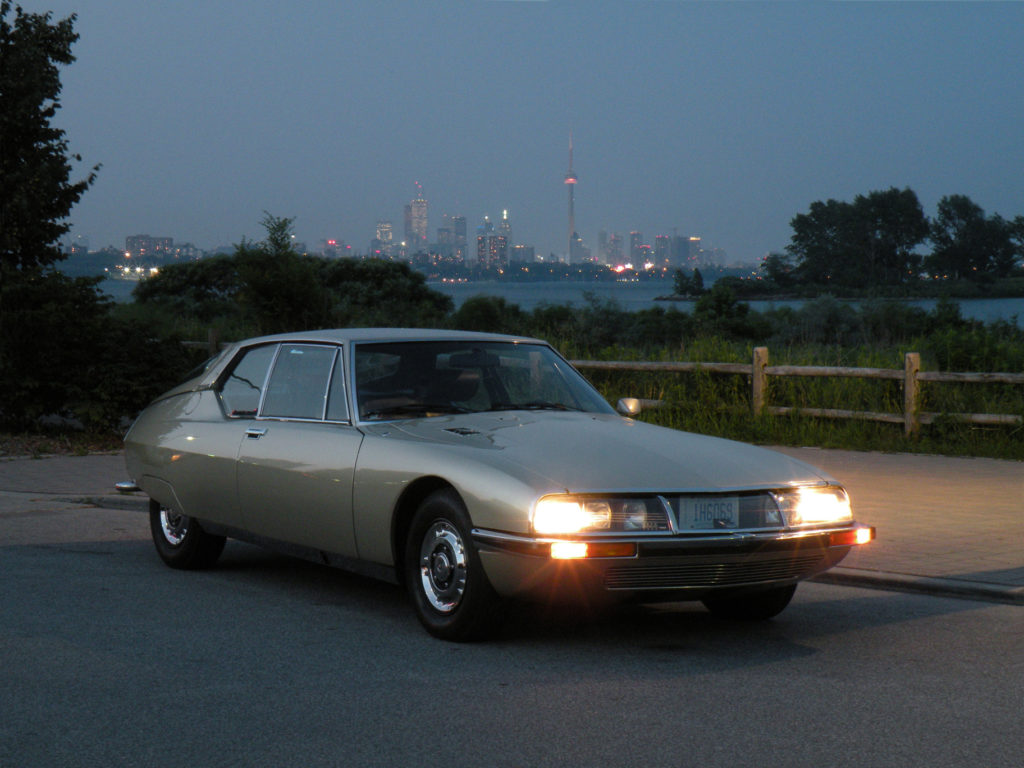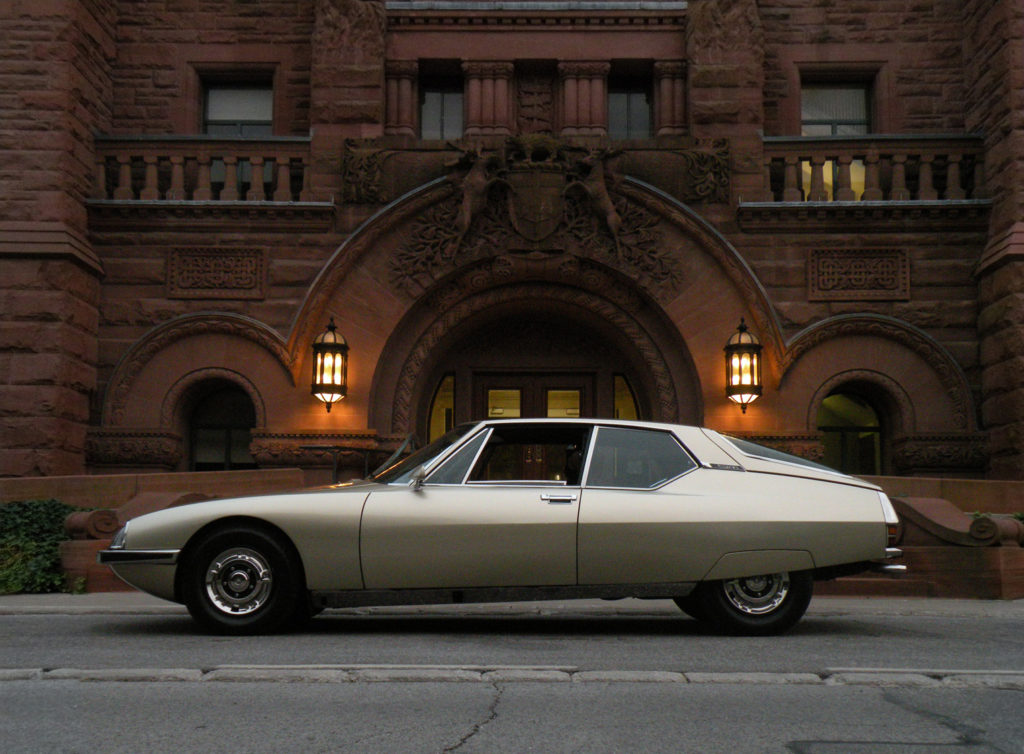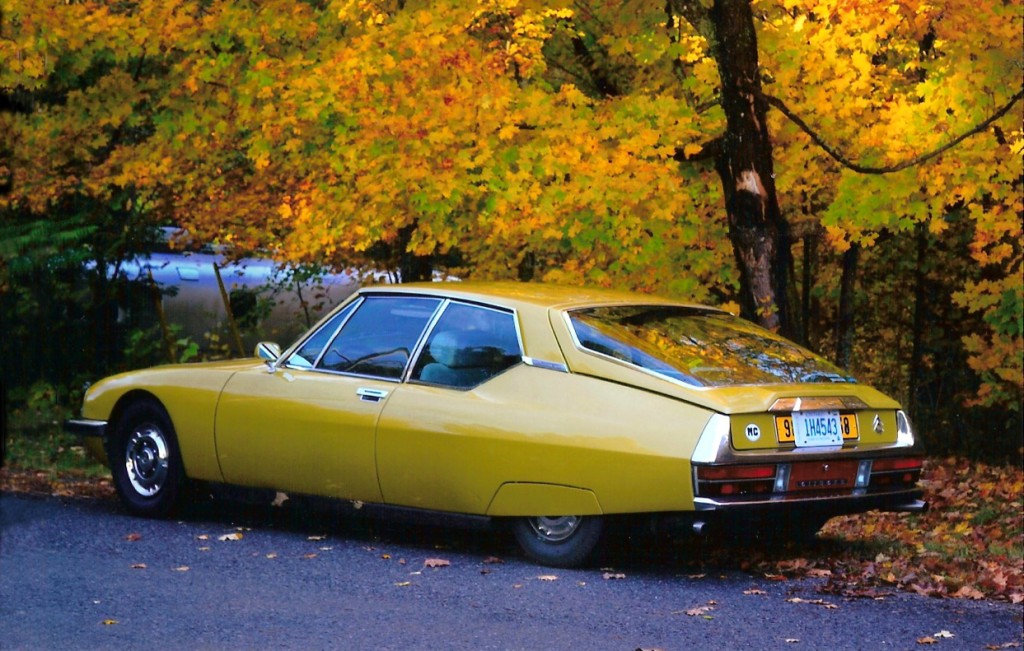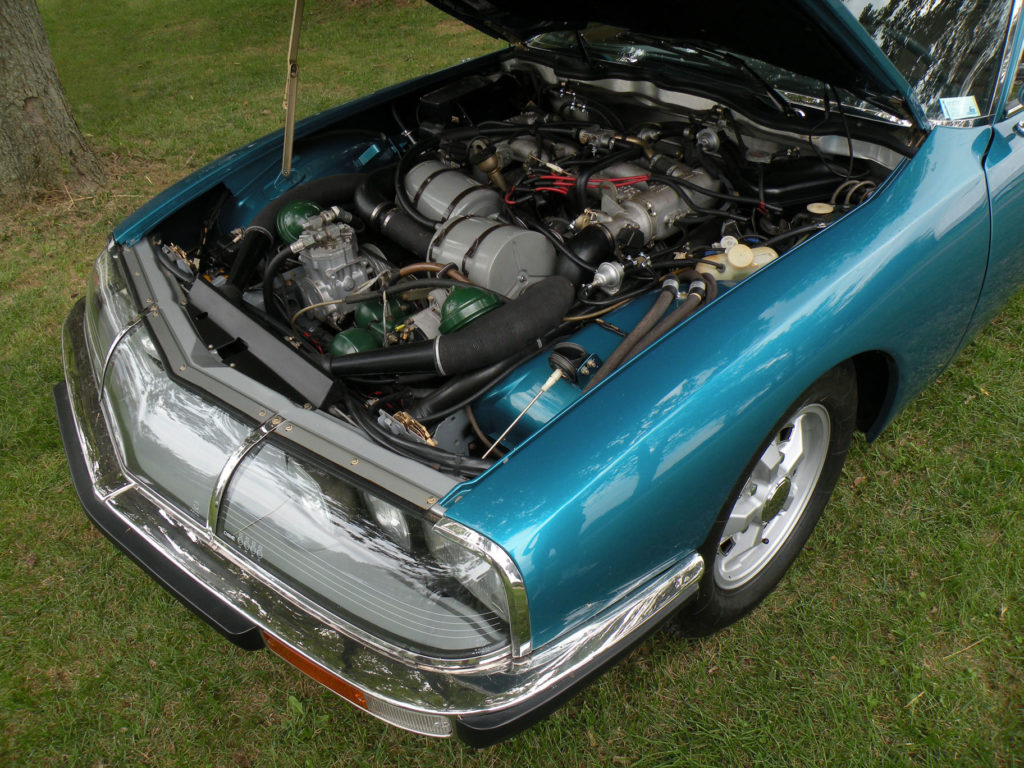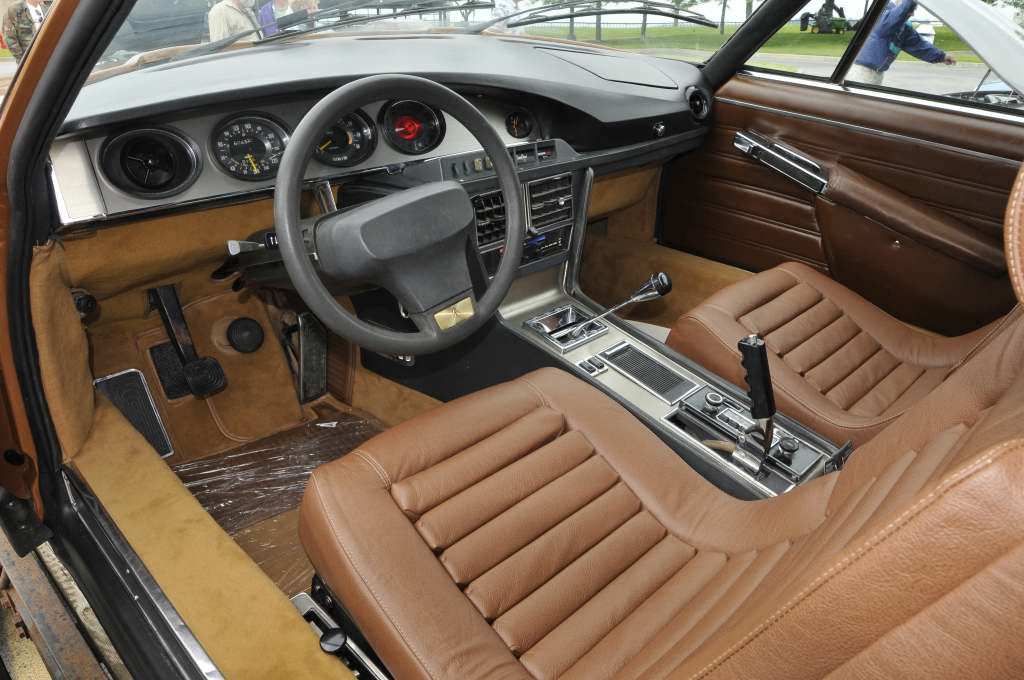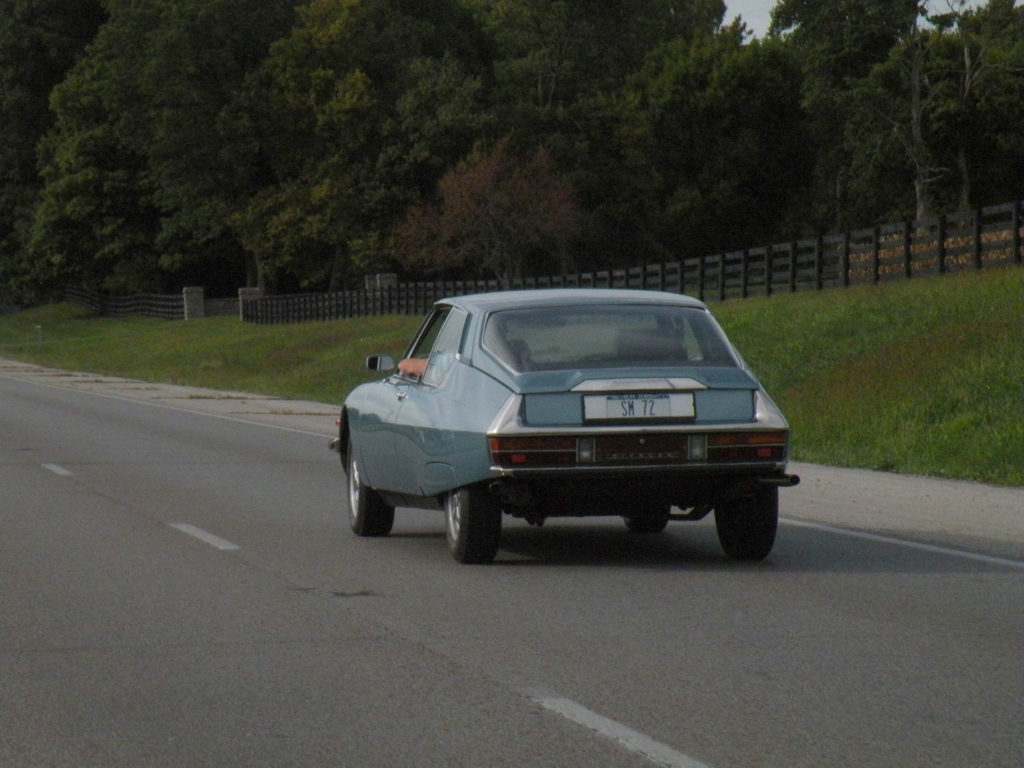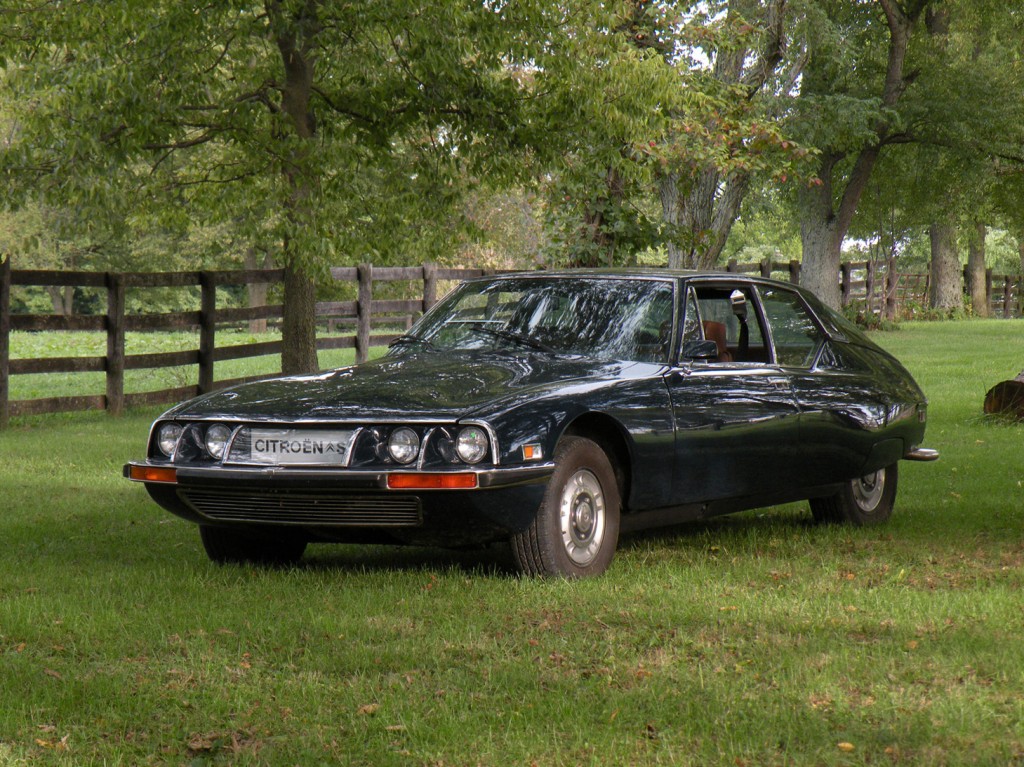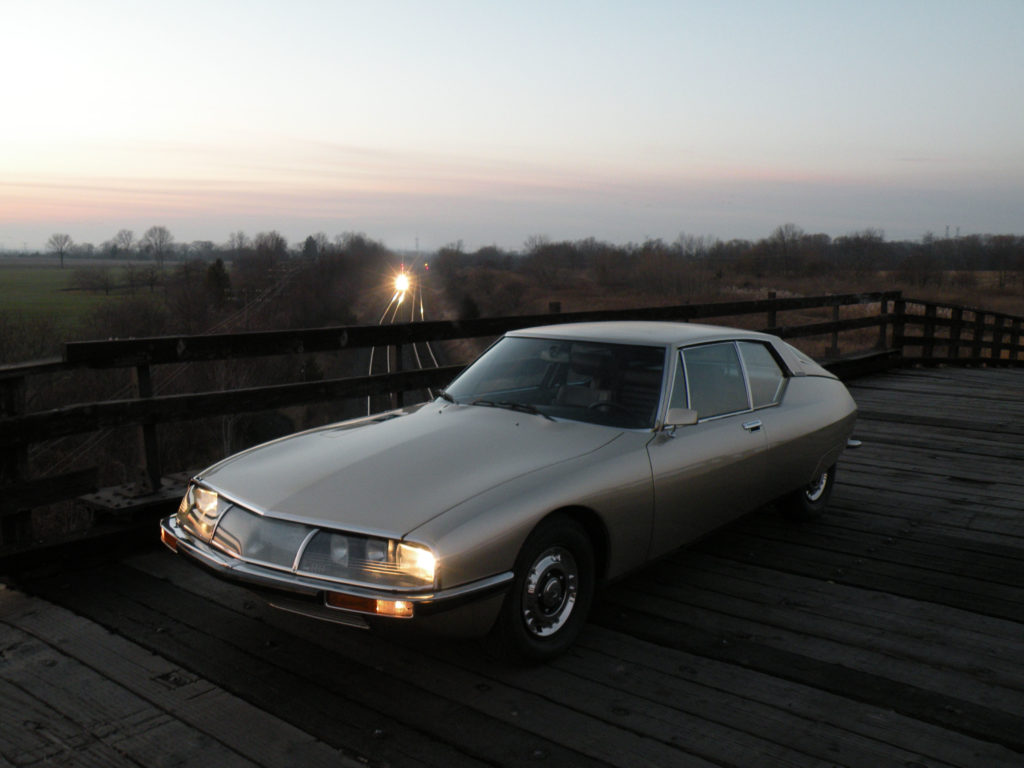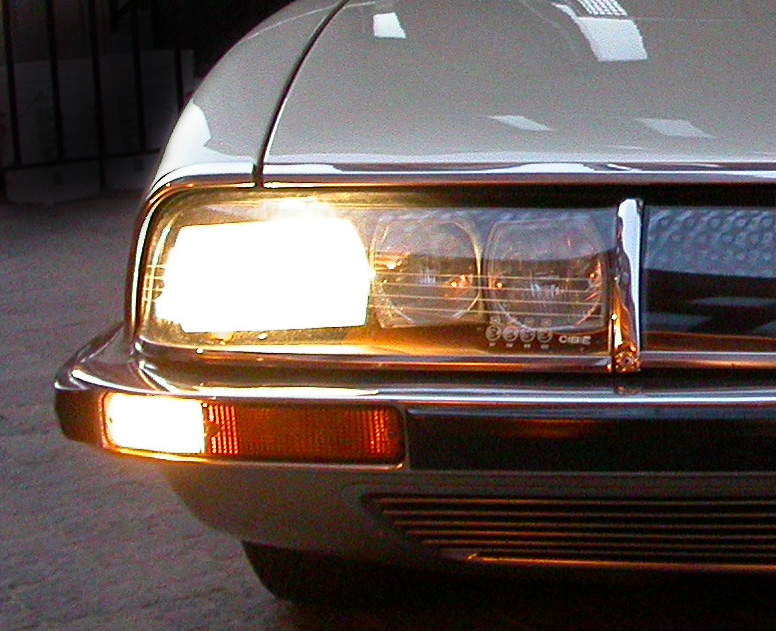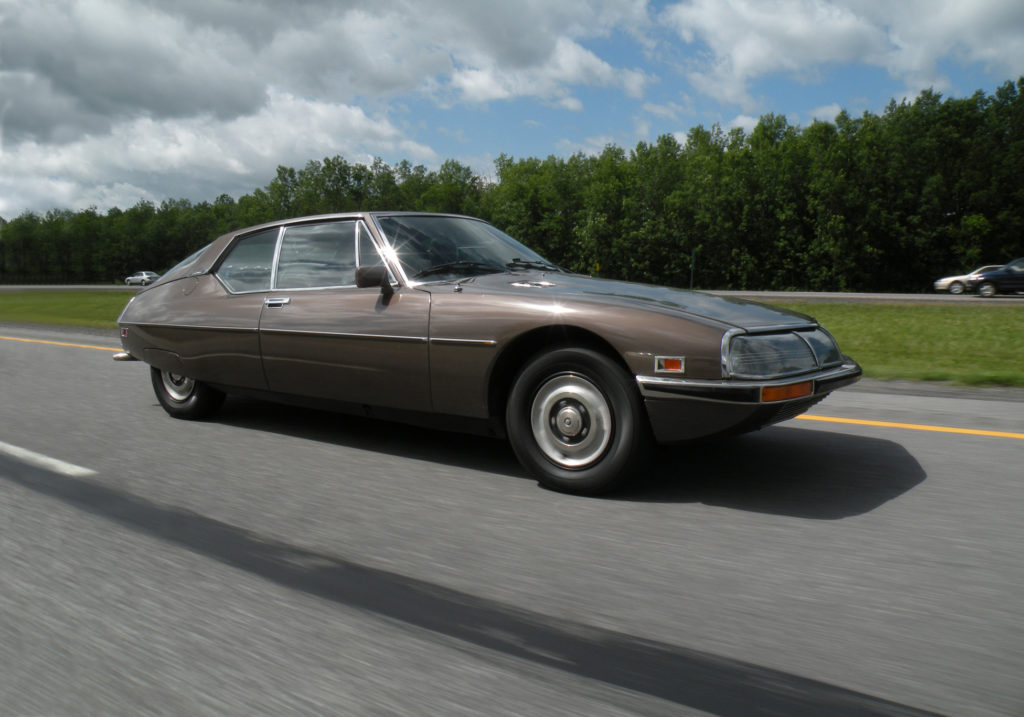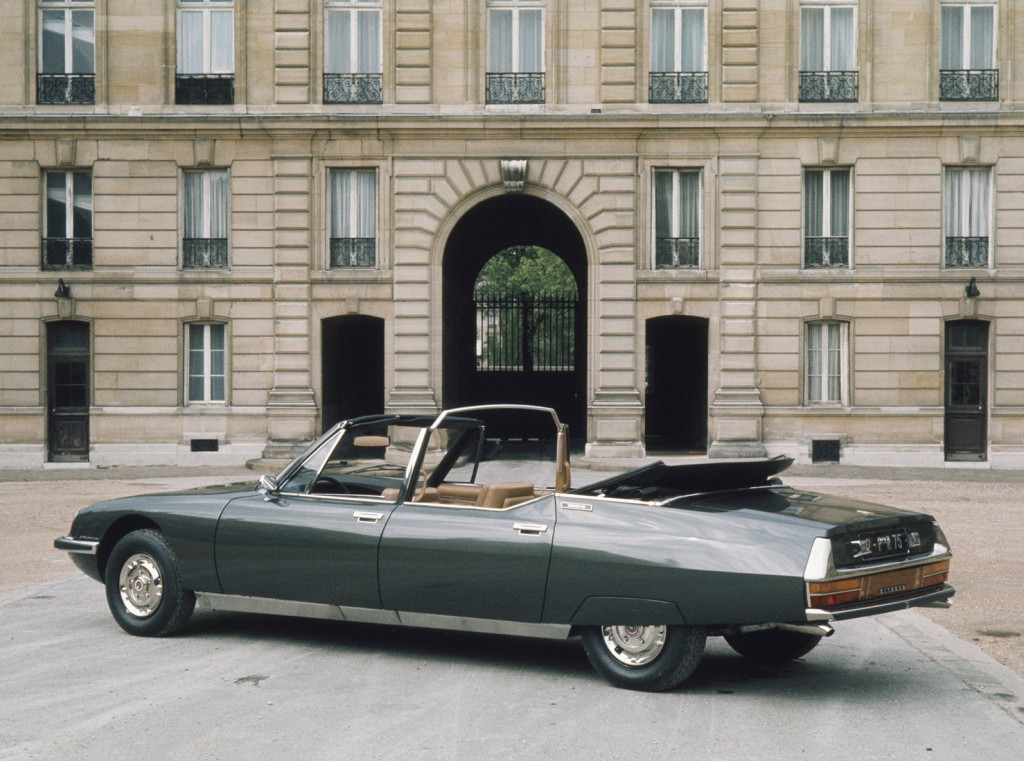The SM was Citroën’s flagship vehicle, produced from 1970 to 1975. First shown at the Geneva Motor Show in March 1970, it won the 1972 Motor Trend Car of the Year award in the USA. The SM name stands for ‘Sports Maserati’. Citroën purchased Maserati in 1968 with the intention of harnessing Maserati’s high-performance engine technology to produce a true Gran Turismo car, combining the sophisticated Citroën DS suspension with a Maserati V6.
In 1961, Citroën started working on “Projet S” which would be a high performance version of the DS. Citroën’s aim was to use the technological lead and the image of the DS to produce a sports car that addressed the same reverance. Jacques Né, the engineer responsible for the project, initially targeted the Le Mans 24 Hours, but managing director Pierre Bercot quickly focused his research on a prestige vehicle to be placed above the DS that was still in production.
In 1970, the SM was a car of the future and the fastest front-wheel-drive car, with a factory-quoted top speed of 220 km/h (140 mph), with independent tests achieving as much as 235 km/h (145 mph). It could be had with a 3-speed Borg-Warner automatic or 5-speed manual transmission. The engine configurations were:
• 2.7 L V6 with 3 Weber carburettors, – 170 bhp (1970–1972)
• 2.7 L V6 with Bosch D-Jetronic injection, – 178 bhp (1973-1975 – Not available in the U.S.)
• 3.0 L V6 with 3 Weber carburetors, – 180 bhp (1971-1975 – U.S. only in 1971, rest of the world, automatic only in 1974 & 1975)
The SM provided a combination of comfort, sharp handling, and high performance not available in any other car at the time. It borrows heavily from the innovations introduced on the DS, by including hydro-pneumatic self-leveling suspension. The braking system, adapted from the DS, employs disk brakes at all four corners (the DS has drums at the rear), with the front brakes being inboard, and cooled via large ducts on the front underside of the car. The hydraulic braking pressure front to rear balance is self-adjusting according to the weight in the rear of the car. It introduced a new type of variable assist power steering, needed because steering was 2 turns lock-to-lock! Yet hitting a pothole at high speed does not turn the steering wheel in the driver’s hands. Even the wiper mechanism is ‘sensitive’ to rain, by measuring the current needed to drive the wiper motor.
Designed in-house by Citroën’s chief designer Robert Opron, the SM bears a vague family resemblance to the DS, especially in retaining the latter’s rear-wheel covers. Seen from above, the SM resembles a teardrop, with a wide front track tapering to a narrower rear track.
The interior styling of the SM is as dramatic as the exterior. The small oval steering wheel is matched by oval gauges.
US-spec Citroën SMs were fitted with 4 round exposed fixed-in-place headlamps while non-US versions featured a six headlight set up behind glass covers there the innermost spot beam lights turned with the steered wheels.
A total of 12,920 SMs were produced during its lifetime. It’s demise was mainly attributed to the 1974 bankruptcy of Citroën where Peugeot took ownership of the company and in May 1975, divested Maserati. Peugeot decided to stop building the SM, as sales had been declining (due to the fuel crisis and issues with engine tension chains) and the DS, upon which the SM was based and with which it shared many parts and subassemblies, was scheduled to be discontinued in 1975.
The SM Presidential Limousine (1 of 2) built by Henri Chapron for the French Government in 1972.
